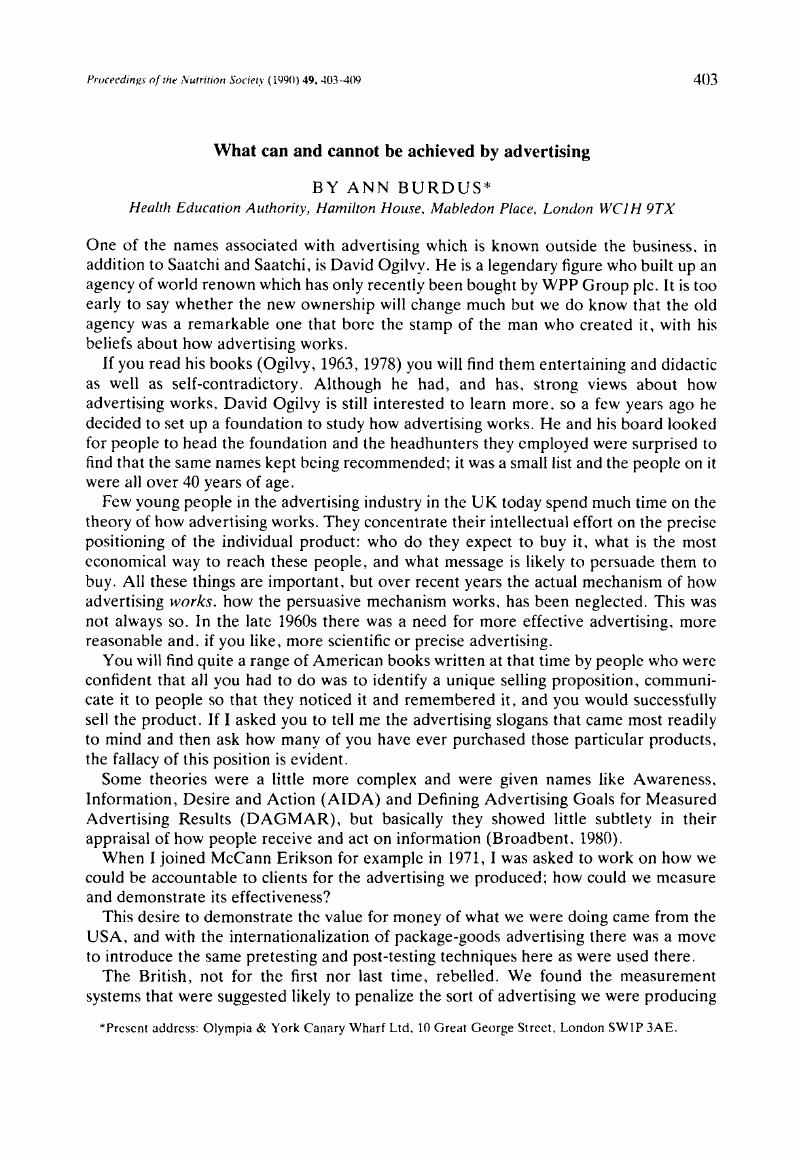Article contents
What can and cannot be achieved by advertising
Published online by Cambridge University Press: 28 February 2007
Abstract

- Type
- Symposium on ‘Nutrition influences in the 1990s’
- Information
- Copyright
- Copyright © The Nutrition Society 1990
References
- 1
- Cited by


